
About UsThe Numismatic Bibliomania Society is a non-profit organization promoting numismatic literature. For more information please see our web site at coinbooks.org SubscriptionsThose wishing to become new E-Sylum subscribers (or wishing to Unsubscribe) can go to the following web page link MembershipThere is a membership application available on the web site Membership Application To join, print the application and return it with your check to the address printed on the application. Membership is only $15 to addresses in the U.S., $20 for First Class mail, and $25 elsewhere. For those without web access, write to: David M. Sundman, Treasurer AsylumFor Asylum mailing address changes and other membership questions, contact David at this email address: dsundman@LittletonCoin.com SubmissionsTo submit items for publication in The E-Sylum, just Reply to this message, or write to the Editor at this address: whomren@gmail.com
BUY THE BOOK BEFORE THE COIN |
- WAYNE'S WORDS: THE E-SYLUM JULY 28, 2013
- SOME 2013 ANA CONVENTION BIBLIOPHILE EVENTS
- LAKE BOOKS 115TH MAIL-BID SALE RESULTS AVAILABLE
- NEW BOOK: THE GREAT AMERICAN WEST
- QUERY: ARE ANY COINS TRACEABLE TO COGAN'S FIRST SALE?
- THE NOVA CONSTELLATIO MARK: 1,000 UNITS
- NOTES FROM E-SYLUM READERS: JULY 28, 2013
- MORE READER REACTIONS ON JOHN J. FORD
- VAN RYZIN'S TAKE ON J. V. MCDERMOTT
- SECURITY FOR THE ANA'S 1913 LIBERTY NICKEL
- ARTICLE PROFILES AUTHOR BETH DEISHER
- QUICK QUIZ: BABY COINS
- CONDITION RANKING OF 1894-S DIMES
- JANE AUSTEN TO APPEAR ON BANK OF ENGLAND £10 NOTE
- GOODREADS QUOTES ABOUT BOOKS
- 1890 BET PAYS OFF AGAIN AS FARTHINGS COME TO MARKET
- FEATURED WEB PAGE: A VISIT TO RON LANDIS' WORKSHOP
WAYNE'S WORDS: THE E-SYLUM JULY 28, 2013

New subscribers this week include Tom Bilotta. Welcome aboard! We have 1,663 email subscribers, plus 241 followers on Facebook.
TAKE NOTE: Due to a family vacation, this week's issue is being published early, and next week's issue may be skipped or late, although I hope to publish an abbreviated one if time allows. Also note that Flickr (the web site which hosts our images) is down for maintenance tonight. If images aren't appearing in your issue, try again tomorrow. Sorry for any inconvenience.
This week we open with an update on NBS and other numismatic book events at the upcoming ANA convention. Next, a report from Fred Lake and word of a new book by Ken Rendell. Other topics include coins traceable to Ed Cogan's first sale, 1894-S Dimes and babies on coins.
To learn more about Mickey Turoff, the North West Company’s 1820 Beaver token, how to find out more about when and where the 1792 half dismes were struck, and the tavern-keeper who offered to mount a coin dealer's head behind his bar, read on. Have a great week, everyone!
Wayne Homren
Editor, The E-Sylum
SOME 2013 ANA CONVENTION BIBLIOPHILE EVENTS
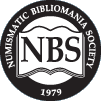 The NBS Symposium will be held on Thursday, August 15, from 11:30 to 1:00 p.m. in Room 6 of the Stephens Convention Center. Our special guest speaker will be Karl Moulton discussing his new book, "John J. Ford and the Franklin Hoard".
The NBS Symposium will be held on Thursday, August 15, from 11:30 to 1:00 p.m. in Room 6 of the Stephens Convention Center. Our special guest speaker will be Karl Moulton discussing his new book, "John J. Ford and the Franklin Hoard".
The NBS General Meeting will be held on Friday, August 16, from 11:30 to 1:00 p.m. in Room 24 of the Stephens Convention Center. We will have presentations from authors (including Bill Bugert) on their new books, reports from the ANS and ANA Librarians, presentations of the Joel Orosz and Jack Collins Literary Awards, installation of new officers, and an auction of important numismatic literary works that have been donated by our members.
We hope these events will be well attended by Young Numismatists, collectors, and bibliophiles, and if past conventions are any indication of future events, the meetings should be informative and spirited.
1792: Birth of a Nation's Coinage
Len Augsburger writes:
On Thursday, at 3pm, Joel, myself, and Pete Smith will have a Money Talks presentation, "1792: Birth of a Nation's Coinage" in which we will cover our latest research on the 1792 half disme.
In our presentation we will reveal some surprising findings about when and where the 1792 half dismes were struck.
The Numismatourist
Howard Berlin, aka The Numismatourist, will give a “Money Talks” presentation at the ANA World’s Fair of Money in Chicago at 4:00pm on Thursday (August15) in Room 13 of the Donald E. Stephens Convention Center. The topic is: When Traveling, Visit a Museum Having a Numismatic Exhibition. Much of the presentation is based on his soon to be released book, “The Numismatourist: The Only World-Wide Travel Guide to Museums, Mints, and Other Places of Interest for the Numismatist.” All E-Sylum readers are welcome to attend.
LAKE BOOKS 115TH MAIL-BID SALE RESULTS AVAILABLE
The prices realized list for our sale #115 which closed on Tuesday. July 23, 2013 is now available for viewing on our web site at www.lakebooks.com/current.html .
415 of the 481 lots contained in the catalog sold with many items picked up at bargain prices and very strong prices were also in evidence. Lot J42, the Evan Kopald Fixed Price List hard-covered in black leatherette and replete with notations by Kopald and letter regarding disposition of unsold lots sold for $450.00 on a $200.00 estimate. A copy of Dan Holmes' Early Date Large Cents in hard cover sold at $180.00 on a $75.00 estimate. The Sotheby's sale of the "Palace Collection" realized $125.00 on $75.00 estimate.
Our next sale will be held in October of this year and will feature fine reference material from the libraries of Chuck Heck, John Dirnbauer, and more from Dave Wnuck.
NEW BOOK: THE GREAT AMERICAN WEST
 Whitman Publishing announces the release of The Great American West: Pursuing the American Dream, by award-winning historian Kenneth W. Rendell. The 224-page hardcover coffee-table book is available online (including at www.Whitman.com) and in bookstores nationwide. Its retail price is $29.95.
Whitman Publishing announces the release of The Great American West: Pursuing the American Dream, by award-winning historian Kenneth W. Rendell. The 224-page hardcover coffee-table book is available online (including at www.Whitman.com) and in bookstores nationwide. Its retail price is $29.95.
Rendell, a founding member of the Rittenhouse Society, has a long-standing connection to numismatics. “In the 1950s I traded my collection of English medieval coins to my friend Dave Bowers, for his collection of presidential letters,” Rendell said. “I immediately became enthralled by the feeling of intimacy with history that these letters gave me.” At the time Rendell was a specialist dealer in American colonial coinage, but this collection took him on a new path. His career since has focused on historical autographs, presidential memorabilia, royalty, militaria, politics, literature, and other collectible areas—including Western Americana.
“The American Dream is fundamentally about hope, and historically it was always connected to the West,” says Rendell. “The hope was that a better life awaits your initiative, your perseverance, your cleverness, your hard work. It’s about making your own future.”
The Great American West approaches the question, “Is the American Dream still alive?” In its collected narratives a reader can see the dream as it used to be—in early hand-drawn maps and adventure-promising posters, in letters sent home by lonesome gold miners, in newspaper clippings about famous explorers and frontier lawmen, in drawings and photographs from the Wild West. “Marveling at this rich and colorful past,” said Whitman publisher Dennis Tucker, “we can see where the American Dream is today.”
Rendell’s numismatic background is well represented in the richly illustrated book. Among the treasures pictured and discussed inside:
- A bar of silver cast from artifacts taken from natives during the conquest of Mexico, page 1. Recovered from a Spanish shipwreck off Grand Bahama Island, it contains two partial tax stamps of King Charles I of Spain.
- A receipt and payment order for 100 gold pesos signed by Hernando Cortéz (conqueror of the Aztecs and Mexico), August 18, 1534, in Mexico City, page 1.
- The 1652 New England shilling of Massachusetts—one of only 10 to 15 known to have survived, page 9.
- The 1652 Massachusetts Pine Tree shilling, minted sometime between 1667 and 1674 but dated 1652 to circumvent British royal laws, page 9.
- A Lord Baltimore silver sixpence, minted 1658/1659 for use in colonial Maryland, page 10.
- A London Elephant token from the late 1600s, believed to have been brought to Pennsylvania by the Quakers, page 10.
- An Indian Peace medal of King George II, dated 1757, showing an Indian and a Quaker sharing a peace pipe, page 11. (Other Indian Peace medals are shown dating from the presidencies of George Washington, Thomas Jefferson, Martin Van Buren, Franklin Pierce, James Monroe, and Abraham Lincoln; and from the reigns of kings George I, George III, and Louis XVI.)
- A Treaty of Greenville medal, 1795, given to the chiefs of 12 Indian tribes in an agreement negotiated by General Anthony Wayne, page 21.
- The Season medals given to the Indians by the Lewis and Clark expedition, page 36.
- Hudson’s Bay Company medals, made in the late 1700s and early 1800s, given as gifts to friendly Indians, page 42.
- Hudson’s Bay Company scrip, good for one pound sterling, issued at York Factory on Hudson Bay, 1821, page 43.
- An 1825 American Fur Company scrip note “Good to W. McGulpin for baking fifty loaves of bread,” page 46.
- John Jacob Astor’s early-1800s American Fur Company silver medal, page 46.
- The North West Company’s 1820 Beaver token—the only circulating currency in the Pacific Northwest, believed to represent one beaver skin; page 47.
- An 1858 Kentucky-issued stock certificate, “for colonizing certain land in Texas,” page 93.
- Receipts signed by ill-fated members of the Donner Party, page 107.
- A Fort Laramie sutler token, issued by a trading post on the Overland Trail, page 111.
- Mormon gold coins struck in Utah and Colorado, page 129.
- Currency and notes signed by Brigham Young and other early Mormon leaders, page 130.
- Gold bars, nuggets, and other treasure from the SS Central America, lost at sea in 1857, page 143.
- One of the 1,389 gold $2.50 coins of 1848, specially stamped CAL. by order of the military governor of California, marking the start of the nation’s greatest Gold Rush, page 143.
- Private and territorial gold coins, tokens, and bars struck by enterprising Americans for use in the West, page 144 and elsewhere.
- An 1860s receipt form for Ben Holladay’s Overland Stage Line, page 152.
- An 1855 stock certificate of the American Express Company, signed by its two founders, Henry Wells and William Fargo, page 155.
All of these numismatic items (and more) are joined by hundreds of other artifacts including rifles and six-shooters, gunpowder horns and beaver hats, voyageur contracts, tomahawks, Indian headdresses, gold-mining claims, maps, drawings, railroad posters, and other iconic memorabilia that help us define the American West. “This book illustrates the daily life of those who have defined America,” wrote Senator Alan Simpson of Wyoming in the foreword. “It puts their letters in the reader’s hands, their lives in the reader’s mind, and their dreams in the reader’s heart.”
Throughout the book, Rendell comments on the market for collectors and historians. For example, in chapter 2 (“The First Eastern Settlements”), he observes that “Collecting artifacts, manuscripts, and books from the period of the first Eastern settlements is less difficult than acquiring material from America’s early exploration, but the availability of such items is still very limited. Some early colonizers, such as William Penn, signed many land grants, but the material of others (for example, Roger Williams, the religious freedom leader who founded Rhode Island) is virtually unique in private ownership. John Smith’s books on Virginia and New England are very rare and expensive. Perhaps the least expensive artifacts are the coins of the British and French colonies; they offer a window into these early times for relatively modest sums.”
# # #
The Great American West: Pursuing the American Dream ∙ By Kenneth W. Rendell; foreword by Senator Alan Simpson ∙ ISBN 0794833594 ∙ Hardcover with dustjacket ∙ 11 x 9.5 inches ∙ Full color ∙ 224 pages ∙ Retail $29.95
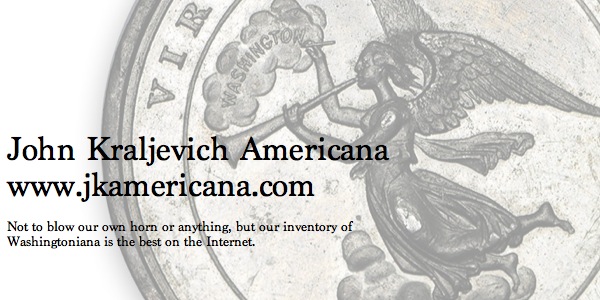
QUERY: ARE ANY COINS TRACEABLE TO COGAN'S FIRST SALE?
Jim Neiswinter writes:
The reference to the 1793 chain cent in the Roper sale of 1852 brought to mind another famous sale where no pedigrees have been traced to. This is Edward Cogan’s first sale in 1858. This was a mail bid sale and the bids were opened on the 1st of November in Cogan’s store in Philadelphia. In 1863 Cogan printed a catalogue of this sale that listed what was essentially a date set of “remarkably fine specimens” of cents that Cogan had put together for a customer.
The coins were not described or even graded. So it would be almost impossible to trace any cent to this sale. There were 19 bidders who bid on 74 of the 77 lots. The total prices realized were $128.08. Four of the bidders were unsuccessful and their names are not known today. The names of the 15 successful bidders are known. Bidder number 5 was Joseph Mickley of Philadelphia who won four lots. One lot was a 1793 Liberty Cap cent that realized $7.25.
In 1867 W. E. Woodward sold Mickley’s collection. Lot 1933 was a 1793 Liberty Cap cent, described as: “entirely uncirculated, polished surface; the finest Cet of this variety that I have ever seen.” It realized $55. This cent was bought by Bayard Smith and the obverse appeared on J. N. T. Levick’s plate of 1793 cents in the April 1869 issue of the AJN.
Was this the cent from Cogan’s 1st sale? It can never be proven with any certainty, but I’d say the odds that it was are better than 50-50.
To read the complete article, see: QUERY: WHERE IS DR. ROPER'S 1793 CHAIN CENT TODAY? (www.coinbooks.org/esylum_v16n30a11.html)
THE NOVA CONSTELLATIO MARK: 1,000 UNITS

Last week we published a PCGS press release about a set of important American colonial coins to be displayed at next month's convention of the American Numismatic Association. Regarding the following passage,
The 1783-dated Nova Constellatio patterns in the display will be the unique copper 5 Units, graded PCGS PR66BN; one of three known silver 100 Units (known as a "Mark"), PCGS PR66; the unique Type 1 silver 500 Units ("Quint'), PCGS PR65+; and the unique silver 1000 Units, PCGS PR65+.
Bill Eckberg writes:
I am pretty sure the "Mark" is the 1,000 unit pattern, not the 100, which was a "Bit" or "Cent."
On May 1, 1784 Robert Morris sent a letter with specimens of his coinage to Thomas Jefferson. Ten days later on May 11, just before leaving Annapolis to travel to Boston where he would board a ship for a four and a half year trip to England and France, Jefferson recorded in his account book, "left with C. Thomson as specimen of coins 1.8 D." This is usually taken to mean Jefferson deposited 1.8 dollars (or 1,800 units) in Nova Constellatio patters with Charles Thomson, Secretary of the Continental Congress. The denominations of the coins are thought to have been one 1,000 unit mark, one 500 unit quint and three 100 unit cents. At least two of the currently extant coins (the 1,000 and a 500 unit coin) can be traced back to this group.
The unique example of the 1,000 unit silver mark coin weighs 268.5 grains according to the Garrett catalog and 269.8 grains according to Breen with a diameter of 33 mm. The coin was passed from John Haseltine to Henry S. Adams, Lorin Parmelee, H.B. Smith, the Chapman Brothers, George Earle, James Ellsworth, John Garrett and then to the current owner John J. Ford, Jr. On the obverse there is a six petal rosette located in the space midway between the start of NOVA and the end of CONSTELLATIO. On the reverse the denomination is designated as 1.000; there is also a stop before and after the date. Excellent photographs are available in the first (November 1979) Garrett Auction catalog, where it is item 622.
There are three surviving examples of the 100 unit silver cent. Two examples have the twin olive leaf edge design while the third example has a plain edge. One of the leaf edge examples was acquired by John Ford from the Garrett sale. The Ford example weighs 27.7 grains according to the Garrett catalog and 27.75 according to Breen with a diameter of 18 mm; it is illustrated in the Garrett sale catalog as item 619. According to Breen this coin can be traced from the London pawnbroker T.F. Cloud to L.E. Shorthouse, Lorin Parmelee, Henry Chapman, James W. Ellsworth, Knoedler Galleries, Wayte Raymond and then to John W. Garrett. The other specimen is first recorded in an Edinburgh coin auction from October 21-22, 1884 conducted by T. Chapman of the collection of William Taap and several other cabinets, as is related by Richard Margolis in the Colonial Newsletter. Apparently the item was uncovered in a London pawn shop in the 1980's and most recently was sold at auction by Stack's (May 1, 1991, Richard Picker sale, lot 112).
According to Breen the unique plain edge 100 unit cent weighs 26 grains with a diameter of 18 mm. The early provenance of this item is unknown, during the late Ninteenth century it was owned by J.G. Murdoch, whose collection was sold by Sotheby's in 1903. It then passed to Robert Garrett as part of the family's collection. In the 1920's John Works Garrett sold it as a duplicate to Wayte Raymond. After passing through some dealers the coin is now in the collection of Eric P. Newman.
Bill adds:
I thought the 100 was a "cent" until I looked in my Red Book, which says "bit".
Time for another correction, this time to the UND site: the coins were FORMERLY the property of John Ford, but are now held by the anonymous buyers who purchased them from his estate. I contacted Lou who's vacationing, but he will have the site updated. I also checked with Donn Pearlman, and there was a revised news release that with corrected information about the "Bit" and "Mark". This was a fun exercise, though. -Editor
To read the complete article, see: The Nova Constellatio Patterns of 1783: Introduction (www.coins.nd.edu/ColCoin/ColCoinIntros/NovaPatterns.intro.html)
To read the earlier E-Sylum article, see: THE NOVA CONSTELLATIO PATTERN SET DISPLAY AT THE 2013 ANA (www.coinbooks.org/esylum_v16n30a15.html)
THE BOOK BAZARRE
NOTES FROM E-SYLUM READERS: JULY 28, 2013
The Discount Grocers Sign
An E-Sylum reader writes:
I saw this grocery store sign in San Francisco. Owner must be a paper money collector.
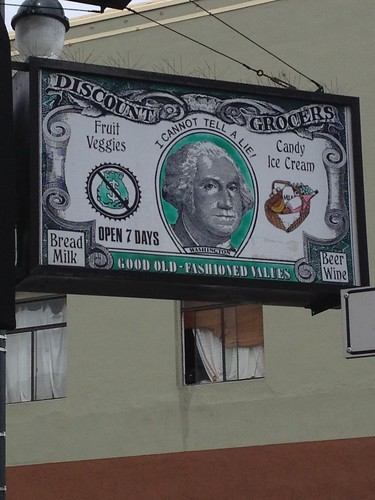
More on the Mickley 1804 Dollar
Dave Stone (U.S. Coin Cataloguer at Heritage Auctions) writes:
I just wanted to clarify about the Heritage lot description for the Mickley 1804 dollar in the August 2013 sale. There will be several versions of the lot description in different formats. An abbreviated version of approximately 30 pages will be included in the printed Platinum Night catalog, while a longer version of approximately 60 pages will appear online.
Unfortunately, the software we usually use to enter lot descriptions in the catalog and online cannot accommodate a document of this size, so we are preparing a PDF document that will be available on the website. The current description on the Heritage website is just the introduction to the longer description which will be posted soon, as noted at the end of the online introduction.
Regarding Jim Duncan’s question about the pedigree of the Mickley dollar, I have attached the detailed roster which will be included in both the long and short descriptions.
6. Mickley Specimen, the Present Example
PR62 NGC. Chief Coiner Adam Eckfeldt; unknown intermediaries; Henry C. Young, a teller at the Bank of Pennsylvania (circa 1850); Joseph J. Mickley (circa 1858); Mickley Collection (W. Elliot Woodward, 10/1867), lot 1676, realized $750; William A. Lilliendahl; Edward Cogan (1868); William Sumner Appleton (1868); Massachusetts Historical Society (1905); Massachusetts Historical Society-Maryland Collector Auction (Stack's, 10/1970), lot 625, realized $77,500; Chicago collection; Reed Hawn, in a private treaty transaction via Stack’s in 1974; Hawn Collection (Stack's, 10/1993), lot 735, realized $475,000; David Queller; Queller Family Collection (Heritage, 4/2008), lot 2089, realized $3,737,500; the present consignor.
To read the earlier E-Sylum article, see: THE MICKLEY 1804 DOLLAR (www.coinbooks.org/esylum_v16n30a17.html)
Mickey Turoff
Paul Bosco writes:
Joe Levine told me Mickey Turoff died a couple months ago. Mickey was a complicated case. Talent and knowledge galore, but he rarely picked up a pen and he rarely shut his mouth. In equal measure, he would spew numismatic pearls and guttural autobiography. I mostly liked Mickey –heck, I was at his wedding.
Mickey had many American medals, including one of the very best V.D. Brenner collections. He probably knew more about Brenner than anyone else, and probably has taken some valuable info to his grave. With Mickey gone, speculation about the future of his collections has perhaps already begun. My money is on a Stack’s-Bowers sale, although I’d prefer a Joe Levine (PCAC) production. Joe would use the exact amount of ink needed to write an auction catalog , one that would give Mickey a proper send-off and lessen some of the damage from his lifelong writer’s block.
The Last Books Signed by Don Taxay?
Tom DeLorey writes:
Apropos George Kolbe's interest in autographed copies of Don Taxay's "Counterfeit, Mis-Struck and Unofficial U.S. Coins," I may have the last copy of it that Taxay ever autographed. While I was at Coin World I heard that Taxay would be visiting the office the next day, so I brought all of my personal copies of his works down to the office and had them autographed on April 23, 1977. I am not sure when he disappeared, but it could not have been much more than a year after that.
To read the earlier E-Sylum article, see: QUERY: INSCRIBED TAXAY BOOKS ON COUNTERFEITS SOUGHT (www.coinbooks.org/esylum_v16n28a12.html)
MORE READER REACTIONS ON JOHN J. FORD
Harold Levi writes:
While reading the various comments about John J. Ford, Jr., I immediately thought of John W. Haseltine. Today, Haseltine is recognized as having been a bit nefarious in some of his coin dealings. He is known to have been the primary outlet for illegally struck U.S. coins obtained by his father-in-law, William Idler. Also, he was involved with the sale of the two $50 half-unions that left the Mint illegally. Yet, he is considered too have been a very knowledgeable numismatists.
The stories Haseltine told about the Confederate cent were just that, stories. He told stories about how he acquired 1803 and 1804 silver dollars from Europe. These and other stories were used to deflect questions about items he sold. It seems that Ford was doing a similar thing. The problem for Ford is that he wrote his stories in letters and Karl Moulton has published them. Stories are difficult to keep straight when you tell lies.
As with Haseltine, we now have to determine when Ford was telling the truth. No doubt, there is some good historical information in the auction descriptions Ford wrote. We just have to determine which ones are factual and those that are not. Where did Ford get the name of the bar where Robert Lovett, Jr. spent the discovery Confederate cent? Also, what documentation did he have that told the name of the bartender? I do not believe either of the names that have been published. (This was in an auction description in the Stack's Ford X sale and attributed to Ford. This was a general description about the Confederate cents in that auction and was a page or so long.)
Paul Bosco writes:
When I was first working for NASCA, I thought a Hong Kong 1866-67 half dollar –then worth maybe $300, and always a scarce coin—was fake. Ford said no way. I realized later that he would have sold it to our consignor, when he sold the Wayte Raymond foreign coin holdings en masse.
Ford disgorged an opinion, which I will quote as exactly as my admittedly-impressive memory permits: “The worst thing you can do is call a genuine coin a fake.”
Or maybe he said “ONE of the worst things…” Anyway, I am inclined to agree with him, but there is, in retrospect, something of the “raw nerve touched” in that quote. The HK half? It was good.
A variation on the theme: Ford and Franklin provided Americans with a legal way (pre-1970s) to buy gold. I am guessing his buyers were not paying more than $70/oz, and that every one of them made money, so to speak. Some of today’s telemarketers may be doing their gold customers less of a favor.
Personally, my numismatic cost-benefit analysis of Ford would put him at better than 50/50, Good vs. Bad. If I were a book dealer, I guess he’d rate even better. Mind you, most numismatists, while not as impactful as our John, would rate well over 90%.
Dick Johnson writes:
John Ford had always been good to me. From book-buying trips together in New Haven to my days at Coin World -- where he wrote a magnificent article and hadn't written anything for other publications recently. I felt honored he chose the fledgling CW over other long-established numismatic journals.
I looked past his often acerbic personality to the knowledgeable numismatic expert inside that sometimes gruff exterior. At a speech he gave on numismatic literature at a Baltimore coin club meeting once I sat in the front row, whipped out a notepad and made notes of what he said. He remembered that and repeated it often, perhaps pigeonholing my interest in numismatic literature in that vast catalog of numismatists in his brain.
He recommended me to J. Doyle DeWitt as a numismatic literature devotee. Author DeWitt sent me a copy of his great work on American campaign tokens and medals because of John's suggestion. (DeWitt still an active reference in my library.)
He was a fastidious eater, what he ate and how he ate it. I remember once he came to my office at Medallic Art on East 45th Street in midtown Manhattan. He sat across from my desk and asked permission to eat a snack he brought with him. After consuming it magically appeared a moist towellet whereupon he cleansed his hands.
It is well known John's association with Charles Wormser in New Netherlands Coin Company. Charlie Wormser was a fine honest gentleman. But he was not the numismatist his father, Moritz Wormser, was. He needed a John Ford for the numismatic expertise in the firm.
When the two parted, and John left New Netherlands, no reason was published at the time. By then I was conducting auctions of medals with my partner, Chris Jensen. We heard a rumor that Charlie Wormser had some remaining inventory from New Netherlands' days.
I made an appointment to meet with him. Chris and I went to his office, by then just a desk in a bare room, not like the suite of offices that was NN before. I touted Charlie and my mutual membership in the New York Numismatic Club plus my long-time friendship with both John Ford and Walter Breen.
I kept talking when, I realized later, I should have listened to what Charlie Wormser was trying to tell me. Perhaps he would have revealed the dark side of John Ford. I'm certain he knew by then of John's clandestine activities. This may certainly have been one of the reasons for the split between the two men. However, had Charlie said at the time that John was a counterfeiter I would not have believed it.
John Ford was a very complex person. But our field is so small that it is difficult to maintain secrets for long. John should have known his shady activities would ultimately by revealed. But greed got the better of him.
Good deeds are soon forgotten; misdeeds are long remembered. In time the good deeds of John Ford will be obscured by the malfeasance he may have committed.
Bob Julian writes:
I have read with increasing distaste the attacks on John Ford. It seems to be a fetish for some writers to attack those who cannot defend themselves. I think the best remarks that I have seen to date are those written by John Kleeberg in this forum. In point of fact I knew John Ford reasonably well; he certainly had no compunction about sharp trading but then this is true of many collectors of the past and present. My personal opinion is, and will remain, that Ford was fooled by Paul Franklin in an area of numismatics that was imperfectly understood at the time. I also note that Ford has not been given due credit for his strong personal involvement in promoting research in American numismatics.
To read the earlier E-Sylum article, see: READER REACTIONS TO BOWERS' THOUGHTS ON JOHN J. FORD (www.coinbooks.org/esylum_v16n30a14.html)

VAN RYZIN'S TAKE ON J. V. MCDERMOTT
Fred Michaelson writes:
This is part of a chapter on the 1913 Liberty Nickel from Robert Van Ryzin's book "Fascinating Facts, Mysteries, & Myths About U.S. Coins."
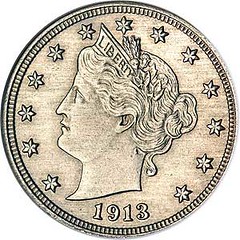 The most colorful and endearing owner of a 1913 Liberty Head was J.V. McDermott, a hard-drinking, vest-pocket dealer from Milwaukee who was known for sliding “MacNickel” down the bar for the curious to see. McDermott purchased his specimen of the 1913 Liberty Head nickel from Jim Kelly in the early 1940s for $900 and quickly made himself and the nickel famous.
The most colorful and endearing owner of a 1913 Liberty Head was J.V. McDermott, a hard-drinking, vest-pocket dealer from Milwaukee who was known for sliding “MacNickel” down the bar for the curious to see. McDermott purchased his specimen of the 1913 Liberty Head nickel from Jim Kelly in the early 1940s for $900 and quickly made himself and the nickel famous.
Even today, many numismatists have cherished stories to tell of their meetings with McDermott and of his rare nickel. Such is the case with collector Tom Fruit, who as a child became a friend and sometimes caretaker of the famous coin. Fruit, 14 at the time, met McDermott in 1949 after Fruit’s family moved to the south part of Milwaukee. A coin collector, Fruit became intrigued when he learned that a famous coin dealer lived not too far from his house. He went right over and knocked on the back door, where he was greeted by McDermott, clad in a sleeveless T-shirt.
“He was really nice,” Fruit said. “I told him I was interested in collecting coins, so he reached into his pocket and pulled out a Pine Tree Shilling and his 1913 nickel.”
Fruit became a regular patron of McDermott’s, going back to make purchases from the dealer whenever a spare $5 or $10 earned from an odd job allowed. For a young collector, the association was a dream come true — a wealth of coins only a few feet from his family’s home. The two became friends. When Fruit turned 16 and was able to drive, he often drove McDermott to coin club meetings and coin shows.
“He would drive there and I’d drive back, because he did most of his business at the bar,” Fruit said of McDermott. “He never had a table that I remember. His table was the bar.”
McDermott made no secret of his passion for drinking, and often made reference to it at the beginning of his advertisements in Numismatic Scrapbook Magazine. In the February 1950 issue he said: “Had a bad cold last month. Doc says, ‘Go to bed for a couple of days.’ But I didn’t[,] as long as I can lift my arm and bend an elbow. I[’ll] never give up.”
From the February 1954 issue came: “That Dan Brown guy out in Denver told me of a rumor that’s goin’ around to whit that they’re goin’ to make us eat our corn instead of drink it — it’s very disturbing.”
And from the September 1960 issue: “Had to miss the Boston show — my neck looked like a hunk of raw meat (reaction from those x-ray treatments I guess). Looks like I’ll have some surgery. Oh! Me! Some of my pals want to get a pool going and one tavern-keeper has offered to mount my head behind his bar. (He says — as a warning to others.) Another one says he thinks it would be better if they shrink it. Anyway, I may fool them if lucky.”
Fruit remembers taking the famous coin to school to have pictures taken for McDermott.
“I used to carry that nickel around for days at a time,” he said. “I’d carry it around in my pocket. He wasn’t afraid to give it to anybody.
“A lot of times, at a coin show, he didn’t know where it was. It would be circulated up and down the bar and somebody would have it. Anytime I wanted the nickel, he would just give it to me. He didn’t ask any questions.”
McDermott also freely loaned the coin to clubs to promote their coin shows. Some believe, however, that with the number of venues at which the coin appeared, McDermott must have had a duplicate made. Fruit discounts such stories.
“There was a lot of talk that Mac had the real nickel and then a replica of it, and that is not true,” he said. “There has never been any substantiation to that. “In fact, I know it is not true, because I could recognize that nickel today. It had a little dent or flake missing right underneath the [Liberty’s] jaw. So I could recognize that nickel anytime, and it was always the same nickel.
“I think the reason for that is, people thought that he would never let a coin that expensive out of his sight. But that didn’t bother him because, he said, ‘What good is it to anybody. Everybody knows where the five nickels are and everybody knows that there are only five. Any one that would turn up, if it was stolen, nobody could sell it, because they would know whose it was.’ So that is why he really wasn’t concerned about anybody swiping it, and nobody ever did.”
Even after Fruit moved away from Milwaukee, he found that McDermott was willing to loan him the coin (at that point valued at nearly $12,500) for display at coin shows.
McDermott’s attitude toward loaning his valuable coin out for others to enjoy can be seen in an article he wrote for Coins magazine shortly before his death. “I don’t believe this coin, or any rarity, should be perpetually consigned to the concealing darkness of a bank vault,” McDermott said. “Legally one man may ‘own’ this 1913 Liberty head nickel, but in a very real sense it belongs to numismatics; for should the collecting fraternity lose interest in it the 1913 would fall by the wayside — all five would be required to buy a handi-pack of not-so-good five cent cigars.”
McDermott died on Sept. 29, 1966. The obituary notice in The Numismatist said, “He had myriad friends but few, if any, intimates,” but he “will live long in the memory of many who saw him and ‘it’ from coast to coast.”
Following her husband’s death, McDermott’s wife, Elizabeth, consigned the coin to a sale held Aug. 8, 1967, during the ANA convention in Miami, where it sold for a then amazing price of $46,000 to Nebraska dealer Aubrey Bebee, who later donated it to the ANA Money Museum in Colorado Springs, Colo.
By 2007, the fame and value of the 1913 Liberty Head nickels had grown to the point where the finest-known specimen was sold for a reported $5 million — a big price for a small coin with an uncertain past but a million-dollar-plus future.
To read the earlier E-Sylum article, see: MCDERMOTT 1913 LIBERTY NICKEL DONATION TO THE ANA (www.coinbooks.org/esylum_v16n30a16.html)
SECURITY FOR THE ANA'S 1913 LIBERTY NICKEL
This brings back some fond memories. I was involved in the room for the Bebees. The nickel was secure in the ANA vault. I made arrangements with police sergeant and ANA member John Anderson to transport the nickel and Robert Hoge from ANA's vault to the designated room in the Broadmoor Hotel. It was the only room in the whole hotel complex that had an operating fireplace. It was on the third floor if my memory serves me properly.
I had a guard on the ground outside the window and balcony of the room in case some smart aleck decided to grab it and throw it out the window. I also had the doors to the room guarded and locked while the nickel was in the room. I also recall Paul Whitnah had an audio tape of the actual auction where the Bebees bought the nickel for $46,000 - a fabulous price at the time.
After the nickel was passed around and people got to Ooooo and Ahaaa, John and Bob returned it to the ANA vault. It was a very special moment for those of us there, and especially me, since I was responsible for the arrangements. Whew! We got through that.
John Anderson later became sheriff of our El Paso county for two terms. He did a fine job and introduced a controversial situation where anyone 26 of age or older with a squeaky clean record could apply for and get a concealed carry weapons permit. This caused a big deal of controversy around the country. But there have been no bad incidents as a result of this. John Anderson continues in the security field and has written one or more articles for The Numismatist concerning security.
John and Nancy Wilson add:
Just a minor correction to our story on McDermott nickel. The auction catalog was autographed by Gordon Gill. Gene Johnson handled the Gill estate and gave the catalog to us.
To read the earlier E-Sylum article, see: MCDERMOTT 1913 LIBERTY NICKEL DONATION TO THE ANA (www.coinbooks.org/esylum_v16n30a16.html)
THE BOOK BAZARRE
ARTICLE PROFILES AUTHOR BETH DEISHER
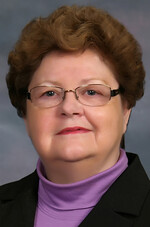 As a child, Beth Deisher enjoyed helping her aunt Etta Turner sort through the cash register of her small North Carolina grocery for rare or valuable coins, but she never imagined she would make a career of it and become known as a national expert on numismatics.
As a child, Beth Deisher enjoyed helping her aunt Etta Turner sort through the cash register of her small North Carolina grocery for rare or valuable coins, but she never imagined she would make a career of it and become known as a national expert on numismatics.
But today, the longtime Logan County resident has become just that and she will be on hand at Peach Tree Books and Gifts signing her latest book on coin collecting from 5 to 7 p.m. Saturday.
“When I was growing up I would help my aunt find coins for her Whitman Folders, but I didn’t collect coins myself,” Mrs. Deisher said.
“I’ve collected books since I was 10 or 11 years old and my aunt was an influence on that. I understood the collector mentality. Either you have the collecting gene or you don’t.
To read the complete article, see: NUMISMATICS 101 (www.examiner.org/news/25914-numismatics-101)
QUICK QUIZ: BABY COINS
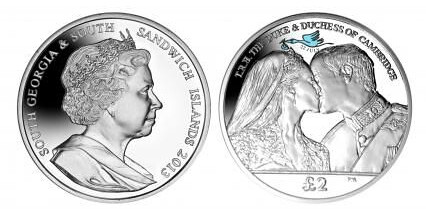
Following the birth of His Royal Highness, the Prince of Cambridge, Pobjoy Mint has announced the release of three coins which have had a special privy mark added to them to congratulate the Royal Couple and to commemorate the historic occasion. The coins will be released on behalf of British Virgin Islands and South Georgia & South Sandwich Islands.
The announcement was made July 22nd in the traditional way that Her Royal Highness the Duchess of Cambridge had given birth to a baby boy who will be third in line to the throne of the United Kingdom. After the Prince was born, a proclamation signed by the doctors who delivered the Royal Baby was rushed from the ward, and displayed on an historic easel at the gates of Buckingham Palace, the same way the Duke of Cambridge’s birth was announced in 1982. This is the first time since Queen Victoria’s era that there have been three living male heirs.
Two coins will be issued from the British Virgin Islands. First released in 2012, one coin depicts the Duchess of Cambridge and the other the Duke of Cambridge both shown in their evening attire following their Wedding in 2011. A Privy Mark has been added to each coin showing baby footprints and the new Royal arrival’s date of birth. The footprints are coloured blue to represent the baby’s sex.
The third coin, which will be issued on behalf of South Georgia & South Sandwich Islands, is a coin which was first issued in 2012, showing the most anticipated moment of their Wedding Day, when the newly married couple displayed their love with a kiss on the balcony of Buckingham Palace to the delight of the millions spectators. The Privy Mark which has been added to this coin shows a stork delivering its precious bundle with the date of the birth. The stork is coloured blue to represent the baby boy.
To read the complete article, see: South Georgia coin with privy mark to congratulate the Royal Couple (en.mercopress.com/2013/07/24/south-georgia-coin-with-privy-mark-to-congratulate-the-royal-couple)
To read the earlier E-Sylum article, see: ROYAL MINT TO ISSUE SILVER PENNY FOR ROYAL BIRTH (www.coinbooks.org/esylum_v16n28a30.html)
THE BOOK BAZARRE
CONDITION RANKING OF 1894-S DIMES
 As two to four different 1894-S dimes are said to be traceable to the family of former San Francisco Mint Superintendent John Daggett, it is not very helpful to name any one as “The Daggett” 1894-S dime. Supposedly, two or three Daggett family 1894-S dimes were sold to a dealer in California in 1954. It is further supposed that John Daggett’s daughter, Hallie, spent one for ice cream shortly after receiving it in 1894 and that the Good grade 1894-S is the one that she spent, the “Ice Cream” 1894-S dime, #8 in my condition ranking.
As two to four different 1894-S dimes are said to be traceable to the family of former San Francisco Mint Superintendent John Daggett, it is not very helpful to name any one as “The Daggett” 1894-S dime. Supposedly, two or three Daggett family 1894-S dimes were sold to a dealer in California in 1954. It is further supposed that John Daggett’s daughter, Hallie, spent one for ice cream shortly after receiving it in 1894 and that the Good grade 1894-S is the one that she spent, the “Ice Cream” 1894-S dime, #8 in my condition ranking.
The pre-1985 ownership histories and backstories are not being discussed here. I am focusing on the histories of 1894-S dimes over the last thirty years and their respective grades.
While other researchers have presented rosters, I am updating my condition ranking, which was first published in July 2007. None of the living authors of rosters have seen many 1894-S dimes and the other researchers tend to emphasize material that was previously published in 1988 by Breen or in 1991 by David Lawrence Feigenbaum. Earlier, James Johnson compiled a roster, which was published in a coin newspaper in 1972.
Recounts of pre-1985 histories of individual 1894-S dimes largely come from the Johnson, Breen and/or Lawrence-Feigenbaum rosters. No one researcher, however, could have compiled a thorough listing solely on his own. It is my aim to productively build upon research that was earlier done by others and to contribute to the overall knowledge about 1894-S dimes in the coin collecting community. I believe that I am the only one to compile a condition ranking.
To read the complete article, see: Condition Ranking of 1894-S Dimes, with Recent Histories (www.coinweek.com/expert-columns/greg-reynolds-classic-rarities/condition-ranking-of-1894-s-dimes-with-recent-histories/)
JANE AUSTEN TO APPEAR ON BANK OF ENGLAND £10 NOTE
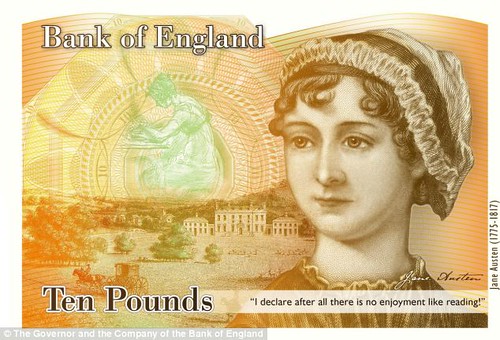
Jane Austen is to become the face of the new £10 note after a public outcry that every banknote featured a man.
New Bank of England governor Mark Carney today unveiled the new design as a tribute to ‘one of the greatest writers in English literature’ which will appear from 2017.
The move comes after the Bank faced criticism that a plan for Winston Churchill to feature on the new fiver meant there would not be a woman on any English note.
After a public clamour to ensure a female face continued to appear on banknotes, former Bank of England governor Lord King hinted that Miss Austen was ‘waiting in the wings’ the next time a slot became available.
His successor Mr Carney said the inclusion of the Pride and Prejudice author would complete a line-up of ‘diverse’ individuals honoured on notes.
Austen will be only the third woman to appear on banknotes, following prison reformer Elizabeth Fry who is being replaced by Winston Churchill on £5 notes and pioneering nurse Florence Nightingale, who was previously on £10 notes.
The Austen £10 note will be issued within a year of the Churchill £5 note, which is expected to be available from 2016, the Bank of England said.
It will include the quote from Pride and Prejudice: ‘I declare after all there is no enjoyment like reading!’
To read the complete article, see: Revealed: First look at how Jane Austen will appear on the new tenner after outcry over men dominating every bank note (www.dailymail.co.uk/news/article-2376432/How-Jane-Austen-appear-new-10-bank-note-outcry-men-dominating.html)
To read a related BBC news article, see: Jane Austen to be face of the Bank of England £10 note (www.bbc.co.uk/news/business-23424289)
GOODREADS QUOTES ABOUT BOOKS
“I have always imagined that Paradise will be a kind of library.”
― Jorge Luis Borges
“If one cannot enjoy reading a book over and over again, there is no use in reading it at all.”
― Oscar Wilde
“Books are the quietest and most constant of friends; they are the most accessible and wisest of counselors, and the most patient of teachers.”
― Charles William Eliot
“Books serve to show a man that those original thoughts of his aren't very new after all.”
― Abraham Lincoln
“If there's a book that you want to read, but it hasn't been written yet, then you must write it.”
― Toni Morrison
“I cannot live without books.”
― Thomas Jefferson
“There are worse crimes than burning books. One of them is not reading them.”
― Joseph Brodsky
“The covers of this book are too far apart.”
― Ambrose Bierce
“Finally, from so little sleeping and so much reading, his brain dried up and he went completely out of his mind.”
― Miguel de Cervantes Saavedra, Don Quixote
“Be awesome! Be a book nut!”
― Dr. Seuss
To read the complete article, see: Quotes About Books (www.goodreads.com/quotes/tag/books)
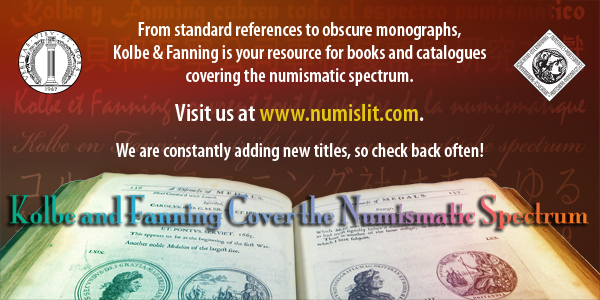
1890 BET PAYS OFF AGAIN AS FARTHINGS COME TO MARKET
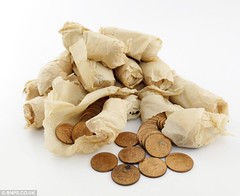 A bet on two raindrops on a window pane that was made 123 years ago has now netted the family of the winner almost £65,000.
A bet on two raindrops on a window pane that was made 123 years ago has now netted the family of the winner almost £65,000.
The wager was made between an aristocrat and his friend during a rainy day at a Dorset stately home in 1890.
The two men bet £5 on which one of two drops would reach the bottom of the window first.
Bitter at losing, the disgruntled friend marched straight to the bank to withdraw the money owed in the lowest denomination possible at the time - 4,800 farthings.
But now the descendants of the winner have had the last laugh after the existing 2,794 farthings, dated 1890 and still in mint condition, sold at auction for £63,440.
The cache of unused bronze coins, wrapped in tissue paper, represents two pounds, 18 shillings, one penny and two farthings - the equivalent of £220 today.
The huge sale price means each coin is worth almost £23, around 22,000 times its original value.
Experts had tipped the collection to fetch £14,000, but were astounded when it sold for more than four times the amount to a UK coin collector.
The coins had been stored in boxes at Crichel House, near Wimborne, Dorset, home of the Alington family and where the original bet was made.
The picturesque 18th century manor house was featured in the 1996 film Emma, starring Gwyneth Paltrow.
Daniel Fearon, a coin expert who valued the collection, added: 'Every now and then odd things crop up and this collection was one of them.
'The best way to describe the coins was 'extraordinary cache'.

To read the complete article, see: Playing the long game: Bet on raindrops at stately home that was paid in 5,000 farthings 123 years ago bears fruit for descendants when coins are sold for £65,000 (www.dailymail.co.uk/news/article-2373474/Bet-raindrops-stately-home-paid-5-000-farthings-123-years-ago-bears-fruit-descendants-coins-sold-65-000.html)
FEATURED WEB PAGE: A VISIT TO RON LANDIS' WORKSHOP
This week's Featured Web Page is suggested by Jon Radel. From the Mintmaster's Notebook blog, the article chronicles a visit to the workshop of engraver Ron Landis. Lots of great photos!I had the great good fortune recently to visit the atelier of Ron Landis, one of those true masters of the minting craft. Mr. Landis has his workshop and abode in Eureka Springs, Arkansas, a place which has seen a surprising amount of mint activity in recent years. (Moffatt & Company, which produced our original Luna Project medalets, was located there.) He began as a jewelry engraver, and taught himself not only die engraving, but also plate engraving for printing. With his long-time business partner, the late Joe Rust, he recreated much of the art of coinage as practiced during the Renaissance — and made a living by it, too!
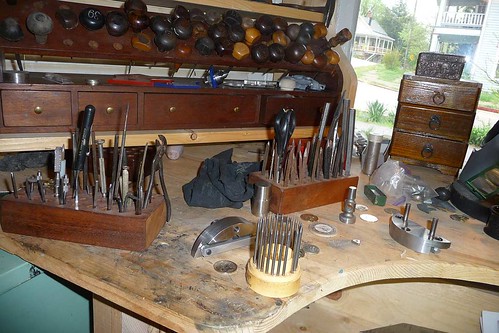
mint.lunarcc.org/notebook/notebook.php
/2013/05/13/landis-atelier
